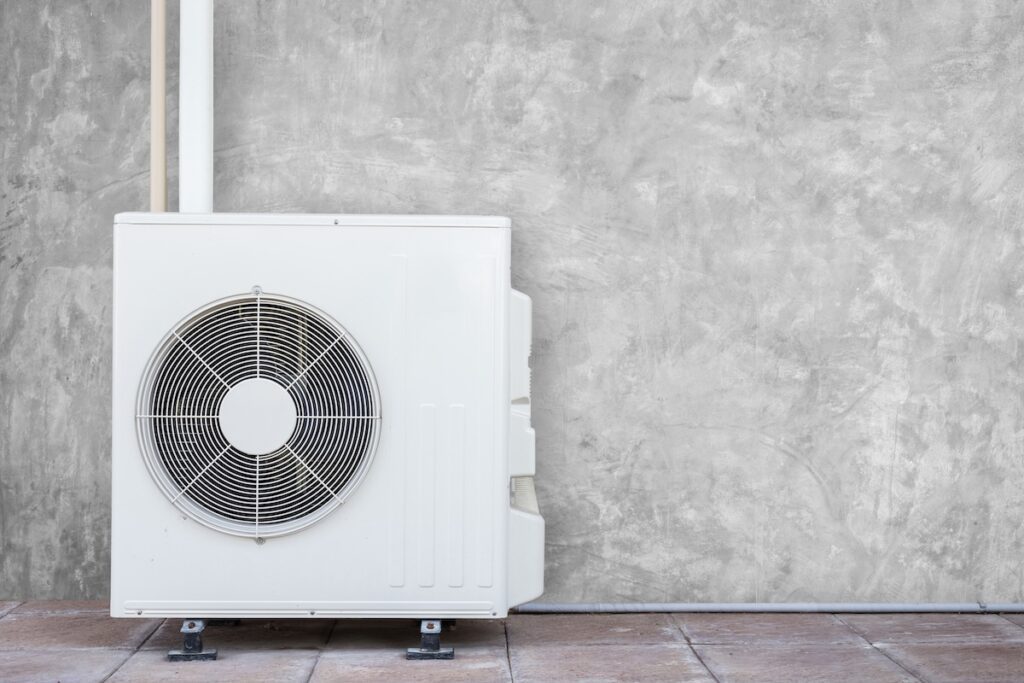Are you noticing that your home is no longer as comfortable as it used to be, despite your heat pump running constantly? Or has your energy bill skyrocketed suddenly? These could be signs that it’s time to consider a heat pump replacement.
If you’re a homeowner, understanding when and how to replace your heat pump is key to keeping your home warm in winter and cool in summer. This blog will cover everything you need to know, organized into the following sections:
- When should you replace your heat pump?
- How to replace a heat pump in 5 simple steps
- How to choose the right heat pump for your home
🤔 When Should You Replace Your Heat Pump?

No heat pump lasts forever, with an average lifespan of 10–15 years. However, certain signs might indicate it’s time for a replacement sooner. Frequent repairs, rising energy bills, and uneven temperatures are clear warnings. If you’re constantly calling for repairs or notice your energy costs climbing, your heat pump might be running inefficiently and working harder than it should. Similarly, hot and cold spots in your home could mean the system is struggling to distribute air properly, a common issue as it ages.
Other red flags include unusual noises like banging or squealing, which often point to mechanical issues, and constant cycling, where the heat pump turns on and off frequently. This short cycling not only wears out the system faster but can also lead to a spike in energy costs. If you’re experiencing any of these problems, replacing your heat pump could save you money and improve comfort in the long run.
Benefits of Replacing Your Heat Pump
Replacing your heat pump may feel like a big investment, but the benefits make it worthwhile. Here are some of the top advantages:
- Lower Energy Bills: Newer heat pumps are designed to be far more energy-efficient, which means you’ll save money on your monthly utility bills.
- Improved Comfort: An updated system ensures consistent temperatures throughout your home, no more dealing with uneven heating or cooling.
- Quieter Operation: Modern heat pumps are engineered to run more quietly, creating a more pleasant living environment.
- Reduced Carbon Footprint: Energy-efficient heat pumps are also environmentally friendly, helping you lower your home’s carbon emissions.
- Enhanced Reliability: Upgrading to a new system reduces the risk of unexpected breakdowns, providing peace of mind.
✅ 5 Steps to Replace Your Heat Pump

Replacing a heat pump might seem intimidating, but breaking it down into steps simplifies the process. Here’s a 5-step guide to ensure a smooth upgrade.
1. Evaluate Your Needs
Before anything else, take the time to assess your home’s specific heating and cooling requirements. This step is crucial because no two homes are exactly alike, and factors like the size of your home, the quality of insulation, number of windows, and the local climate all play a role in determining the best heat pump for you. For example, a larger home with poor insulation in a colder climate may require a higher-capacity heat pump than a smaller, well-insulated home in a milder climate. To get the most accurate evaluation, consult with an HVAC professional who can perform a thorough assessment of your home and provide tailored recommendations based on your unique situation. They may even conduct a load calculation to ensure the system you choose is perfectly sized for your needs.
2. Choose a Replacement Heat Pump
Once you understand your home’s heating and cooling needs, you can move on to selecting the right heat pump. There are several factors to consider during this step. First, prioritize energy efficiency by looking for ENERGY STAR-rated models, which can help you save money on energy bills in the long run. Next, decide on the type of heat pump that best suits your home. Air-source heat pumps are common, cost-effective, and work well in moderate climates. Ground-source (or geothermal) systems are more energy-efficient but require a higher upfront investment and space for underground loops. Ductless systems, on the other hand, are ideal for homes without existing ductwork or for specific areas that need targeted comfort. Additionally, ensure the capacity of the heat pump is suitable for your home—too small, and it won’t adequately heat or cool your home; too large, and it may cycle inefficiently. Work closely with an HVAC expert to find a system that balances performance, efficiency, and budget.
3. Schedule the Installation
After selecting your new heat pump, the next step is to schedule the installation with a trusted HVAC provider. This step is critical, as proper installation directly impacts the performance and lifespan of your system. Look for a company with licensed, certified, and experienced technicians who specialize in heat pump installation. Read reviews, ask for references, and confirm that the provider offers a warranty on their installation work. Once you’ve chosen a provider, discuss timelines and schedule an installation date that works for you. It’s a good idea to ask for a detailed breakdown of the process, including how long it will take and what steps are involved. Be sure to communicate any specific needs or concerns, such as access to your home or preferences for placement of the unit, before the installation begins.
4. Remove the Old System
Before installing your new heat pump, your old system will need to be safely disconnected and removed. This step is more than just hauling away the old unit; it’s essential to ensure that the removal process is done correctly to avoid complications during installation. Professional HVAC technicians will carefully disconnect the old system, including any electrical connections, refrigerant lines, and ductwork (if applicable), to prepare the space for the new system. Proper disposal of the old unit is also important, as many heat pumps contain refrigerants and other components that must be handled in an environmentally responsible way. Reputable HVAC companies will typically include removal and disposal as part of their service, so confirm this when hiring your provider.
5. Install the New Heat Pump
The final step is the installation of your new heat pump system. The HVAC technicians will place the indoor and outdoor units, connect refrigerant lines, and set up any ductwork or ductless components as needed. During installation, they will also calibrate the system to ensure optimal performance and verify that all components are functioning properly. Once everything is set up, the technicians will thoroughly test the system, checking for issues like leaks, airflow problems, or incorrect thermostat settings. A good installer will also take the time to explain how to use and maintain your new heat pump. This includes demonstrating how to adjust the thermostat, clean or replace filters, and schedule regular maintenance. By the end of the installation process, your heat pump will be ready to deliver efficient, reliable heating and cooling for your home.
⚖️ How to Choose the Right Heat Pump for Your Home

Not all heat pumps are created equal! Here’s what to look for when choosing the right one for your home:
1. Energy Efficiency Ratings
One of the most important factors to consider when choosing a heat pump is its energy efficiency. Look for models with high Seasonal Energy Efficiency Ratio (SEER) and Heating Seasonal Performance Factor (HSPF) ratings. These ratings indicate how efficiently a heat pump can cool and heat your home. The higher the numbers, the more energy-efficient the system, which can save you money on energy bills over time while reducing your environmental footprint.
2. Type of Heat Pump
There are different types of heat pumps available, each suited to specific needs and situations. Air-source heat pumps are a popular choice for most climates because they are cost-effective and perform well in a variety of conditions. Ground-source heat pumps, also known as geothermal heat pumps, are among the most efficient options available, but they require a larger upfront investment due to installation complexity. If your home doesn’t have existing ductwork, ductless mini-split systems are an excellent alternative, providing flexibility and efficiency without the need for extensive renovations.
3. Advanced Features
Modern heat pumps come with a range of advanced features designed to enhance both efficiency and comfort. Smart thermostats allow you to control your system remotely and optimize settings based on your habits. Variable-speed motors adjust the system’s operation to match your home’s needs, improving energy efficiency and maintaining a consistent temperature. Some units even include eco modes, which prioritize energy conservation without sacrificing comfort. These features can make a significant difference in both performance and convenience.
4. Professional Guidance
If you’re feeling overwhelmed by the options or unsure which heat pump is right for you, it’s always a good idea to consult with an HVAC professional. They can assess your home’s heating and cooling needs, evaluate your budget, and recommend the ideal heat pump system. Professional guidance ensures you make an informed decision, leading to better performance, efficiency, and long-term satisfaction with your choice.
🏠 Heat Pump Replacement
When it comes to heat pump replacement, Palmetto Air Conditioning is the team you can trust to keep your home comfortable year-round. With certified technicians, top-quality equipment, and tailored solutions, we go above and beyond to ensure your heating needs are met with professionalism and care.
Our affordable pricing and exceptional customer support make the process seamless from start to finish. Ready to upgrade your home’s heating system? Contact Palmetto Air Conditioning today to schedule your consultation and experience the difference!
